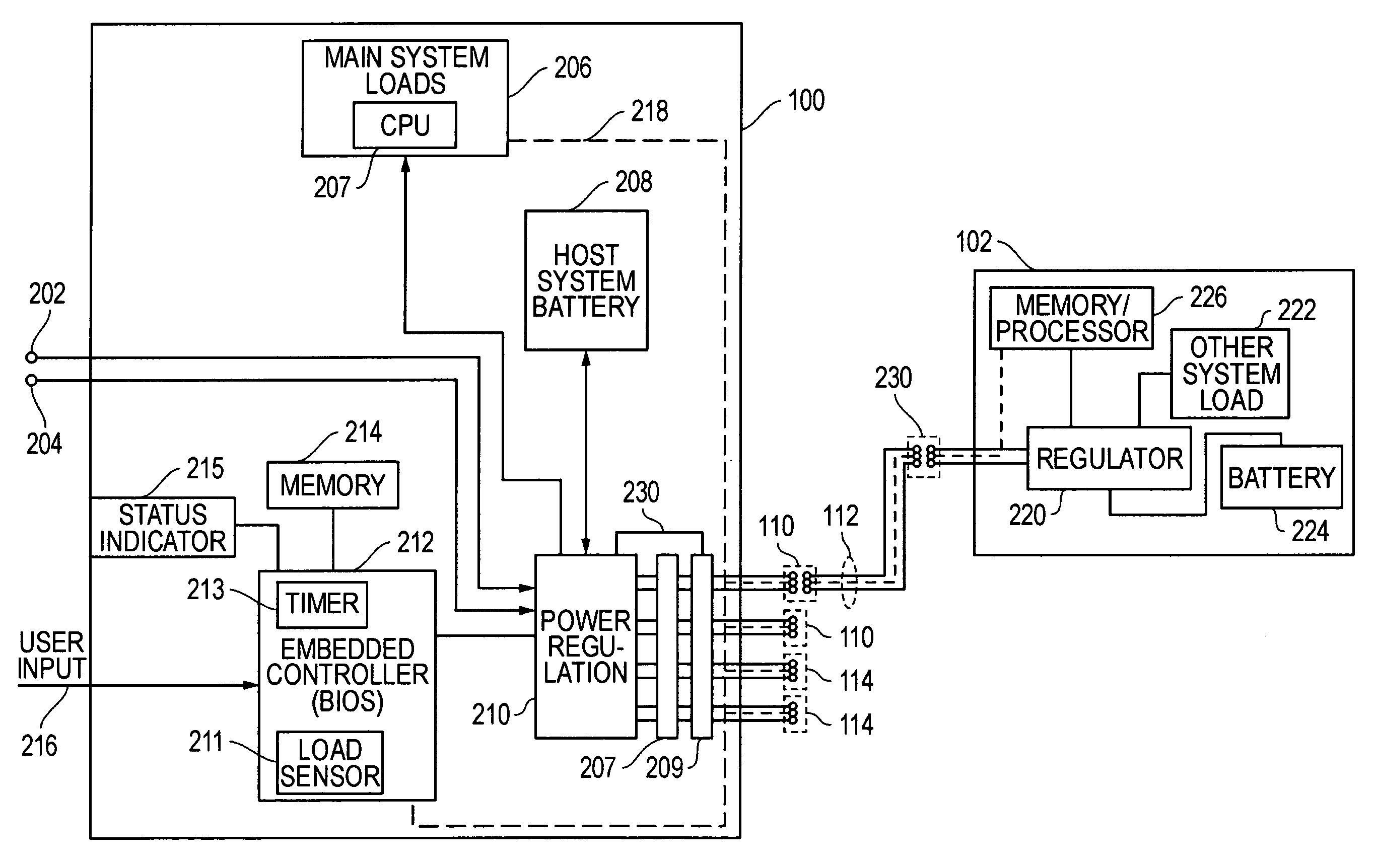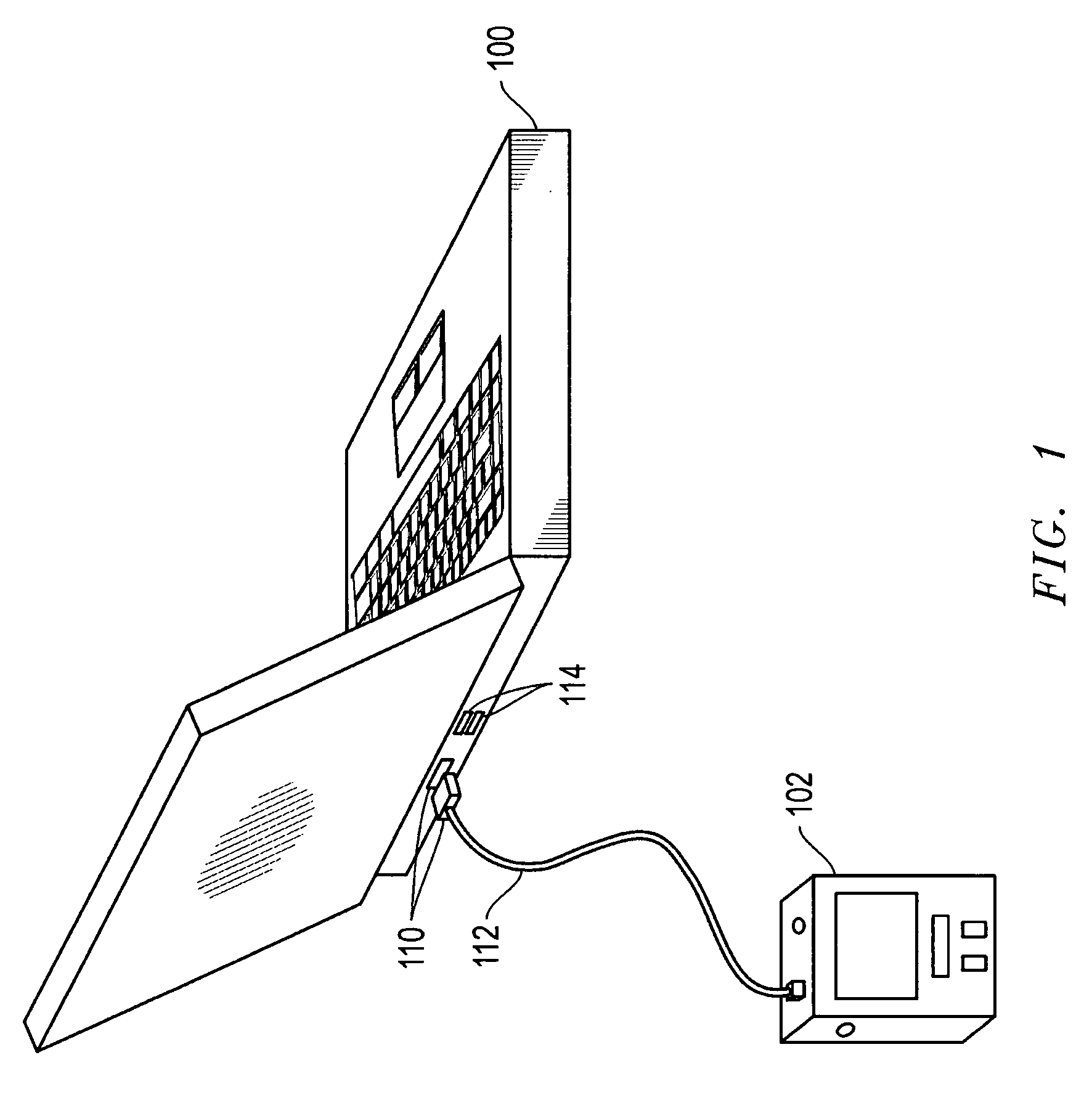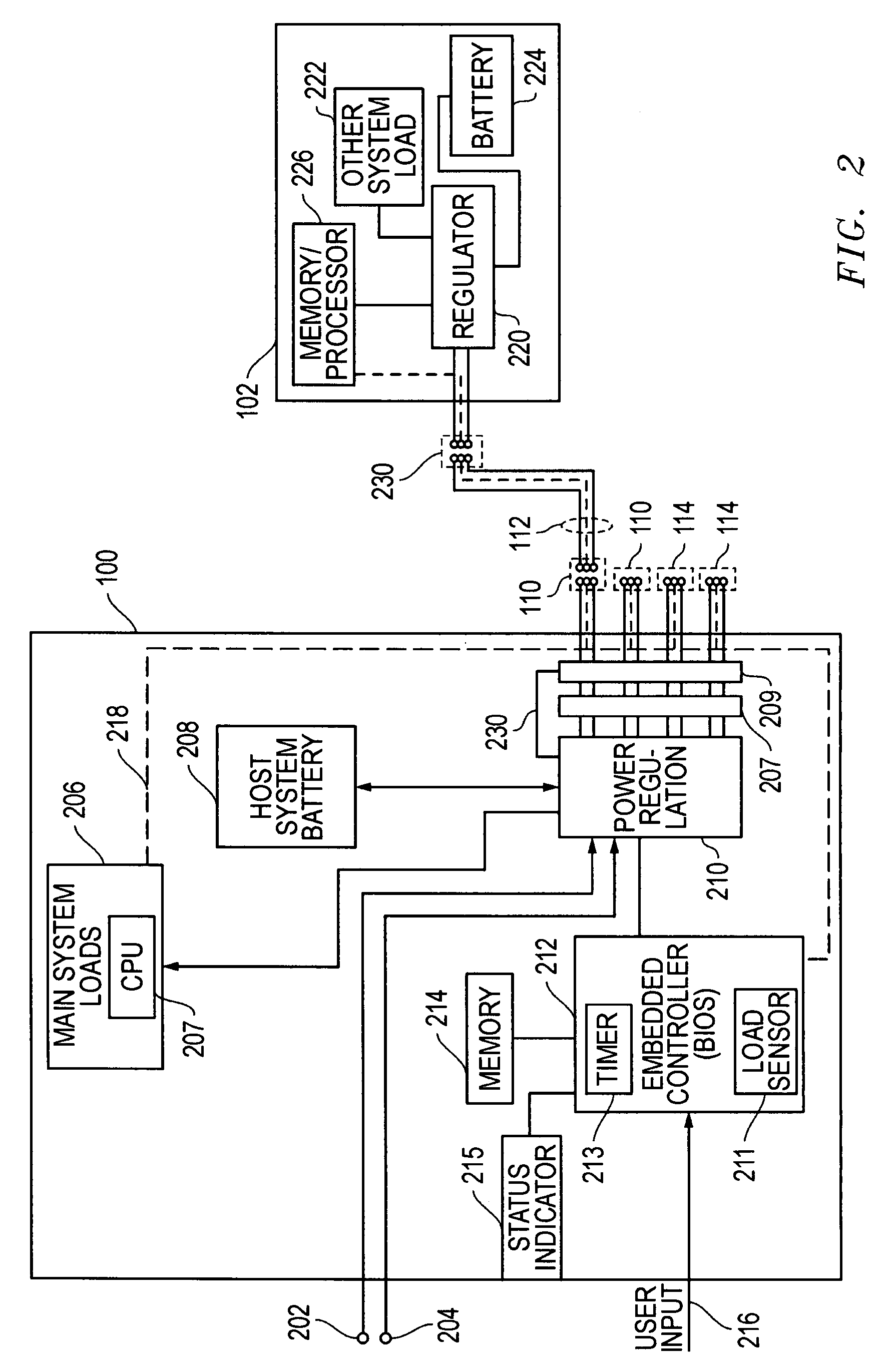[0005]Disclosed herein are systems and methods for providing
power management to one or more external interfaces of an information
handling system that is capable of acting as a host for charging and / or otherwise powering one or more external devices (e.g.,
consumer electronic devices) via its
external interface / s that have both
data exchange and power transfer capability, e.g., serial
bus interfaces having both
data exchange conductors (e.g.,
data transmission pins) and separate dedicated power transfer conductors (e.g.,
power transmission pins) such as
USB-based interfaces (e.g.,
USB 2.0) or Firewire. In one exemplary embodiment
power control may be provided to manage power transfer from the standard
power transmission pins of a serial
bus external interface port of a host information
handling system (e.g., such as a host notebook computer, host desktop computer, host
server, etc.) in order to redirect power from the host information
handling system for other purposes. In another exemplary embodiment, a host-based power source (
power management component) may be provided that is capable of managing power in a manner that is independent of the host information handling system operation and host management states (e.g.,
server management states, notebook management states) when enabled, e.g., to provide power management when the host information handling system is in an inactive state. In yet another embodiment, a user-based methodology may be implemented to selectively provide power to one or more external interfaces of a host information handling system based on user need or desire for access to external interface power, even when the host information handling system is inactive. Thus, a user may be enabled with the capability of taking
advantage of the increasing internal
battery capacity of battery-powered information handling systems, and may be enabled with the capability of enhancing power savings by decreasing power drawn by an information handling system whether or not operating on battery power.
[0008]In one exemplary embodiment, external interface power management may be implemented by providing a host battery-powered information handling system (e.g., notebook computer, etc.) with a built-in power
monitoring and control capability that monitors the remaining
battery capacity of the host system (e.g., by monitoring
battery voltage, etc.), and controls the provision of power to the
power transmission pins of one or more external interface ports (e.g., conventional serial
bus interface ports such as USB or Firewire) of the host system based on the monitored
battery capacity of the system. In such an embodiment, only a portion of the battery capacity of the host system battery may be allocated for use by an external device (e.g., via the standard power transmission pins of a conventional external interface port), saving the remainder of the battery capacity for operation of the host information handling system itself. Using this methodology, power may be removed from an external port to which an external device is coupled, leaving a pre-defined amount of battery power for usage by the host system while at the same time allowing the external device to charge while the host system is non-operational. Alternatively, battery capacity may be preserved by controlling the time that power is provided to the power transmission pins of one or more external interface ports of a battery-powered information handling system (e.g., by using a
timer to limit the amount of time to a preselected amount of time that power is provided to the power transmission pins). In either case, power available to external devices may be limited in a way that prevents completely draining the battery of the host system.
[0011]In the practice of the disclosed systems and methods, power management for one or more external interfaces of a host information handling system may be implemented so that power is available at the interface / s at all times, e.g., when the host system is both active and inactive. However, in an alternative embodiment, power management for a given external interface may only be initiated when user interest in powering an external device from the given external interface is detected, and this power management for the given external interface / s may be maintained for only so long as this user interest is maintained. In this way, power may be further conserved by only making power available to the given external interface (and only managing power for the given external interface) when user interest for such is actually detected.
 Login to View More
Login to View More  Login to View More
Login to View More 


